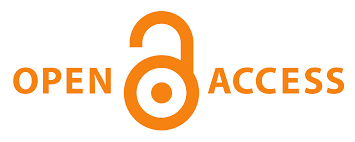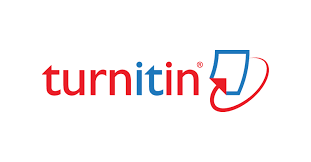Developing Educational App to Boost Students’ Basic English Skills: A Research & Development
Main Article Content
Ahmat Ramadana Rayyan
The aim of this research was to identify what media students needed and how to develop it, as well as to determine whether the media was effective in overcoming student problems. This research utilized a research and development design. The population of the research comprised all first-grade students of SMAN 4 Lhokseumawe, which included two classes. In this research, two classes were chosen as samples using simple random sampling. The sample was divided into two groups. The experimental group X.1 consisted of 30 students who were taught using the direct instruction method, while the control group X.2 consisted of 30 students who were taught normally. The data collection techniques used were questionnaires and tests, which included pre-tests and post-tests. The researcher administered questionnaires before conducting the pre-test. Then, the researcher gave the pre-test before providing treatment and the post-test after the treatment. The data were analyzed using the t-test formula. The researcher found that the scores of the t-test were 1.77, 2.21, 1.69, and 2.1, while the score of the t-table at the significance level of 0.05 and df = 58 was 1.67. This indicated that the t-test was higher than the t-table. Thus, based on the criteria, the alternative hypothesis (Ha) of this research was accepted, and the null hypothesis (Ho) was rejected. This indicated that using the educational application was effective in enhancing the basic English skills of first-grade students at SMAN 4 Lhokseumawe.
Akker, J. V. D. (1999). Principle and method of development research. London In J. Akker, J.V.D., Branch, R. M., Gustafson, K., Nieveen N., & Plomp , T. (Eds), Design methodology and development research (1-14). Dordrechi: Kluwer Academic Publisher.
Ali, M. M. (2024). Technology-based teaching and learning in Pakistani English language classrooms. CRC Press.
Andreani, W. (2019). «PowPow» interactive game in supporting English vocabulary learning for elementary students. Procedia Computer Science, 157, 473–478. https://doi.org/10.1016/j.procs.2019.09.005
Arafik, M. (2021). Development of digital comic technology applications design to increase children’s literature reading interest in elementary school. Proceedings - 2021 7th International Conference on Education and Technology, ICET 2021, 277–281. https://doi.org/10.1109/ICET53279.2021.9575105
Azmy, K., & Rahman, F. (2024). Utilizing first language (L1) in teaching English: Examining the beliefs of English lecturers at Indonesian universities regarding the use of L1 in English language instruction. Journal on Technical and Vocational Education, 9(2), 124-140.
Becerra-García, E. (2023). Active Methodologies: An Approach to Virtual Teaching in Natural Sciences. Smart Innovation, Systems and Technologies, 366, 245–256. https://doi.org/10.1007/978-981-99-5414-8_24
Bestari, M. B. (2014). Development of Educational Software as a Learning Media in Teaching Tenses at SMKN 2 Lhokseumawe. Undergraduate Thesis.
Borg, W. R. & Gall, M.D. (1983). Educational Research: An Introduction. (4th ed.). New York: Longman.
Cheung, A. K. L. (2021). Structured questionnaires. In Encyclopedia of quality of life and well-being research (pp. 1-3). Cham: Springer International Publishing. https://doi.org/10.1007/978-3-319-69909-7_2888-2
Chisunum, J. I., & Nwadiokwu, C. (2024). Enhancing Student Engagement through Practical Production and Utilization of Instructional Materials in an Educational Technology Class: A Multifaceted Approach. NIU Journal of Educational Research, 10(2), 81-89. https://doi.org/10.58709/niujed.v10i2.2002
Clark, R. C., & Mayer, R. E. (2023). E-learning and the science of instruction: Proven guidelines for consumers and designers of multimedia learning. John Wiley & sons.
Dhivya, D. S., Hariharasudan, A., & Nawaz, N. (2023). Unleashing potential: Multimedia learning and Education 4.0 in learning Professional English Communication. Cogent Social Sciences, 9(2), 2248751. https://doi.org/10.1080/23311886.2023.2248751
Fadhillah, N., Siregar, E. A., Lestari, U. H. P., Rahman, F., & Khalsiah, K. (2024). Society 5.0 in Education: Interactive Learning through Digital Media Integration on Teaching Speaking. Scope: Journal of English Language Teaching, 9(1), 392-402. http://dx.doi.org/10.30998/scope.v9i1.24084
Fentari, R. (2025). Integration of digital technology in English language learning in elementary schools: trends, challenges, and opportunities. International Journal of Educational Technology and Society, 2(1), 35-51. https://doi.org/10.61132/ijets.v2i1.238
Garrison, D.R. (2011). A Framework for Research and Practice. (2nd ed). New York: Madison Avenue.
Gerlach, V. S., & Ely, D. P. (1980). Teaching and media: A systematic approach. (2nd ed.). London: Continuum International Publishing Group.
Godwin-Jones, R. (2011). Mobile apps for language learning. Language Learning & Technology, 15(2), 2–11. https://doi.org/10125/44244
Harmer, J. (2002). The Practice of English Language Teaching. (4th ed). England: Longman.
Hasumi, T., & Chiu, M. S. (2024). Technology-enhanced language learning in English language education: Performance analysis, core publications, and emerging trends. Cogent Education, 11(1), 2346044. https://doi.org/10.1080/2331186x.2024.2346044
Henderson, A. J. (2003). The E-Learning Question and Answer Book: A Survival Guide for Trainers and Business Managers. New York: AMACOM.
Hughes, Arthur. (1989). Testing for Language Teachers. New York: Cambridge University Press.
Ilham, M., Rahman, F., Kholid, M., & Sari, D. D. (2024). The Efficacy of e-Guru Application in Boosting Learning Effectiveness: Does It Deliver Results?. International Journal of Social Learning (IJSL), 4(2), 197-209. https://doi.org/10.47134/ijsl.v4i2.257
Ilham, M., Rahman, F., Sari, D. D., & Annisaturrahmi, A. (2023). Enhancing Preschool English Vocabulary Through Multimedia Tools: Insights from a Mixed-Methods Study. Al-Athfal: Jurnal Pendidikan Anak, 9(2), 93-102. https://doi.org/10.14421/al-athfal.2023.92-02
Inggita, et.al. (2019). ― “How is Mobile-Assisted Language Learning (MALL) Implemented by Senior High School Teachers?”. Jurnal Pendidikan Humaniora, Vol. 7, No. 3.
Isti’anah, I. (2023). Developing Construct 2 Application-Based Online Puzzle in Teaching Pancasila Symbols during Covid-19 Outbreak for First Graders of Elementary School. AIP Conference Proceedings, 2679 (Query date: 2024-01-20 04:16:49). https://doi.org/10.1063/5.0112207
Khan, A. (2019). Overcoming Educational Challenges in Pakistan: Strategies and Policy Recommendations. Journal of Education Policy and Leadership, 34(1), 45-62. https://doi.org/10.1080/17442081.2019.1579745
Lai, C., Hu, X., &Lyu, B. (2018). Understanding the nature of learners’ out-of-class language learning experience with technology. Computer Assisted Language Learning, 31(1–2), 114–143. https://doi.org/10.1080/09588221.2017.1391293
Lara Nieto-Marquez, N., Baldominos, A., Cardena Martinez, A., & Perez Nieto, M. A. (2020). An exploratory analysis of the implementation and use of an intelligent platform for learning in primary education. Applied Sciences, 10(3), 983. https://doi.org/10.3390/app10030983
Malik, R. S., & Hamied, F. A. (2014). Research methods: A guide for first-time researchers. UPI PRESS
Muhson, A. (2010). Pengembangan media pembelajaran berbasis teknologi informasi. Jurnal pendidikan akuntansi indonesia, 8(2). https://doi.org/10.21831/jpai.v8i2.949
Palandi, J. F., Pudyastuti, Z. E., & Molewe, K. (2024). Enhancing English vocabulary through game-based learning: A case study of the scramword application. International Journal in Information Technology in Governance, Education and Business, 6(1), 109-121. https://doi.org/10.32664/ijitgeb.v6i1.141
Pamilu, A. (2022). DEVELOPING A WEB-BASED APPLICATION FOR TEACHING GRAMMAR FOR 10th GRADE STUDENTS OF SENIOR HIGH SCHOOL (Doctoral dissertation, STATE ISLAMIC UNIVERSITY).
Persson, V., & Nouri, J. (2018). A systematic review of second language learning with mobile technologies. International Journal of Emerging Technologies in Learning, 13(2), 188–210. https://doi.org/10.3991/ijet.v13i02.8094
Ponto, J. (2015). Understanding and evaluating survey research. Journal of the advanced practitioner in oncology, 6(2), 168. https://doi.org/10.6004/jadpro.2015.6.2.9
Rahmat, S. N. (2015). Developing an English Tenses Learning Application on the Android Smartphone Platform. Undergraduate Thesis.
Ramansyah, W. (2014). Pengembangan Multimedia Pembelajaran Interaktif Berbasis Adobe Flash CS3 pada Kelas 1 SDN Bancaran 3 Bangkalan. Jurnal Ilmiah Edutic: Pendidikan dan Informatika, 1(1).
Rosell-Aguilar, F. (2017). State of the app: A taxonomy and framework for evaluating language learning mobile applications. CALICO Journal, 34(2), 243–258. https://doi.org/10.1558/cj.27623
Singh, M. N. (2021). Inroad of digital technology in education: Age of digital classroom. Higher Education for the Future, 8(1), 20-30.
Syahrum. (2014). Kuantitatif Research Method. Bandung: Ciputat Media.
Szeto, E., Cheng, A. Y.-N., & Hong, J.-C. (2016). Learning with social media: How do preservice teachers integrate YouTube and social media in teaching? The Asia-Pacific Education Researcher, 25, 35–44. https://doi.org/10.1007/s40299-015-0230-9
Tsai, C. W. (2019). A research of digital image-based cognitive learning systems in applications of preventive medicine-an example of redding elementary school, San Francisco. 2019 IEEE 4th International Conference on Signal and Image Processing, ICSIP 2019, 846–849. https://doi.org/10.1109/SIPROCESS.2019.8868581
Wang, W. (2021). Using Artificial Intelligence-Based Collaborative Teaching in Media Learning. Frontiers in Psychology, 12. https://doi.org/10.3389/fpsyg.2021.713943
Wiley, J., & Sons. (2011). E-learning and the Science of Instruction. Canada: Simultaneously.
Zhang, R., & Zou, D. (2022). Types, purposes, and effectiveness of state-of-the-art technologies for second and foreign language learning. Computer Assisted Language Learning, 35(4), 696–742. https://doi.org/10.1080/09588221.2020.1744666




